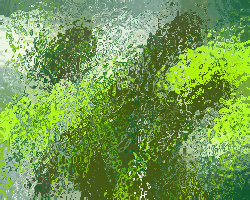
The Basic Dilemma of the Artist
The psychophysical problem is long standing and, probably, intractable.
We have a corporeal body. It is a physical entity, subject to all the laws of physics. Yet, we experience ourselves, our internal lives, external events in a manner which provokes us to postulate the existence of a corresponding, non-physical ontos, entity. This corresponding entity ostensibly incorporates a dimension of our being which, in principle, can never be tackled with the instruments and the formal logic of science.
A compromise was proposed long ago: the soul is nothing but our self awareness or the way that we experience ourselves. But this is a flawed solution. It is flawed because it assumes that the human experience is uniform, unequivocal and identical. It might well be so — but there is no methodologically rigorous way of proving it. We have no way to objectively ascertain that all of us experience pain in the same manner or that pain that we experience is the same in all of us. This is even when the causes of the sensation are carefully controlled and monitored.
A scientist might say that it is only a matter of time before we find the exact part of the brain which is responsible for the specific pain in our gedankenexperiment. Moreover, will add our gedankenscientist, in due course, science will even be able to demonstrate a monovalent relationship between a pattern of brain activity in situ and the aforementioned pain. In other words, the scientific claim is that the patterns of brain activity ARE the pain itself.
Such an argument is, prima facie, inadmissible. The fact that two events coincide (even if they do so forever) does not make them identical. The serial occurrence of two events does not make one of them the cause and the other the effect, as is well known. Similarly, the contemporaneous occurrence of two events only means that they are correlated. A correlate is not an alter ego. It is not an aspect of the same event. The brain activity is what appears WHEN pain happens — it by no means follows that it IS the pain itself.
A stronger argument would crystallize if it was convincingly and repeatedly demonstrated that playing back these patterns of brain activity induces the same pain. Even in such a case, we would be talking about cause and effect rather than identity of pain and its correlate in the brain.
The gap is even bigger when we try to apply natural languages to the description of emotions and sensations. This seems close to impossible. How can one even half accurately communicate one's anguish, love, fear, or desire? We are prisoners in the universe of our emotions, never to emerge and the weapons of language are useless. Each one of us develops his or her own, idiosyncratic, unique emotional language. It is not a jargon, or a dialect because it cannot be translated or communicated. No dictionary can ever be constructed to bridge this lingual gap. In principle, experience is incommunicable. People — in the very far future — may be able to harbour the same emotions, chemically or otherwise induced in them. One brain could directly take over another and make it feel the same. Yet, even then these experiences will not be communicable and we will have no way available to us to compare and decide whether there was an identity of sensations or of emotions.